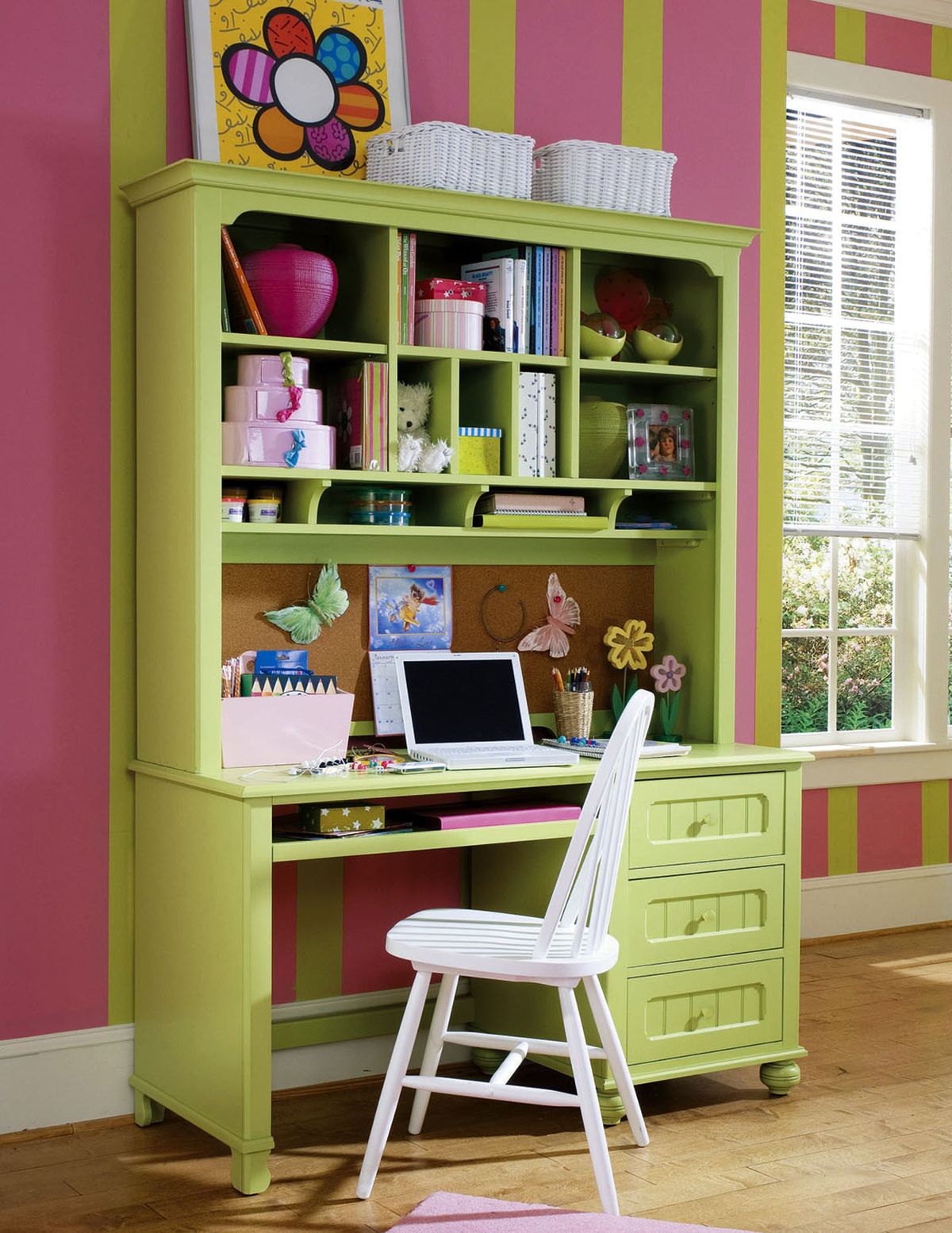Special work space can inspire children to study harder

Kids may want to do their homework at the kitchen table with a sea of activity surrounding them, but many experts say they shouldn’t.
“Build a space dedicated to homework and eliminate distractions,” advises Douglas Merrill, a former Google spokesman and co-author of “Getting Organized in the Google Era” (Broadway Books, 272 pages, $23).
According to Merrill, everyone thinks they can multitask, but our brains just aren’t cut out for it.
In her new book, “Right-Sizing Your Home” (Northwest Arm Press, 2010), consultant Gale Steves agrees.
“Although kids gravitate to the kitchen or family room – where parents can keep a watchful eye on them – ultimately having a workspace of their own is important,” she writes.
Maxwell Gillingham-Ryan, founder of the design blog Apartmenttherapy.com, taught school in New York City before he became an interior designer.
Each year he would visit students’ homes, and here’s what he observed: “Invariably, the children who did best in school came from homes that were calm, well-organized and attractive.”
“A child’s homework space should be as simple and practical as possible,” Gillingham-Ryan says. “Children need a private, separate environment where they can concentrate and get through their work.”
While homework space must be functional and well organized, it also should be somewhere the child wants to spend time.
“Get your child involved in the design,” advises Susanna Salk, interior designer and contributor to the “Today” show. “Have them look at pictures and say what they like.”
Salk’s book, “Room for Children: Stylish Spaces for Sleep and Play” (Rizzoli, 240 pages, $45), compiles pictures of children’s rooms decorated by well-known designers.
She believes that a child’s workspace should have an inspirational element. Salk suggests checking out the wall art available on Art.com, where you can find murals that are easy to move, are stain-resistant, and can transform even a tiny homework space with a beautiful landscape or world map.
Most children are inspired by having something like what their parents use, Gillingham-Ryan says.
“My daughter likes to have something that my wife or I have on our own desks,” she says. “Consider giving your child a pen, lamp stapler or mouse pad like your own.”
When selecting furnishings for homework space, keep in mind that your little girl or boy is going to get bigger and older.
“Don’t just look at kids’ stuff,” Salk says.
Consider good adult task lighting, and keep in mind that a nice wooden table can serve as a good desk.
Gillingham-Ryan favors desks made from wood. “Natural materials help a child to feel grounded,” he says.
He believes there is a healthier energy from natural materials, and fewer propensities for a child to write on them.
Gillingham-Ryan also suggests avoiding fluorescent lighting, selecting instead halogen or incandescent light.
Stock up on containers, trays and baskets. “If their homework space is well organized, children are more likely to keep it that way,” Salk says.
But don’t overdo storage or your child will wind up hoarding a lot of stuff that could otherwise be thrown out.
“Storage always wants to be full, and anything you can’t see has a tendency to live there forever,” Gillingham-Ryan warns.
Use baskets and open containers so you can see what’s there and encourage your kids to keep editing things out.
Fortunately, you do not need a large space to create a good homework area. If space is limited, Steves suggests placing a desk under the top bunk instead of another bed, and creating storage with a small file caddy on wheels.
She also suggests thinking vertically when space is limited. A hutch or shelves above a desk provide storage as well as space to display children’s work.
No matter how appealing and private the homework space may be, encourage your child to take a break.
“The human brain can only focus on any one thing for about an hour,” says Merrill. “It is more effective to take a break and come back to homework.”